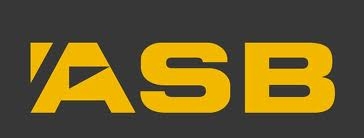
By Gareth Vaughan
ASB chief executive Barbara Chapman says her bank has no out of cycle hike to floating mortgage rates planned despite its parent Commonwealth Bank of Australia (CBA) joining other Australian banks in one over the past week and suggestions from her counterpart at BNZ that New Zealand banks may tread the same path.
Led by the ANZ Banking Group several Australian banks - blaming an increase in their own funding costs - have increased their floating, or variable, mortgages rates in the last few days despite the Reserve Bank of Australia leaving the Official Cash Rate (OCR) unchanged at 4.25% at its most recent monthly rate review. Yesterday new CBA chief executive Ian Narev said the bank had been writing home loans at a loss prior to Monday's 10 basis points hike that took its floating mortgage rate to 7.41%. ASB's floating home loan rate is 5.75%. See all advertised bank home loan rates here.
BNZ chief executive Andrew Thorburn has told interest.co.nz this type of out of cycle hike could also occur in New Zealand. Subsequent to Thorburn's comments BNZ did hike its key floating mortgage rate by 15 basis points to 5.74%, although this largely brought it in line with its rivals. Here the OCR is 2.5% and many economists don't expect it to be hiked before 2013.
But asked whether an out of cycle floating rate hike was likely in New Zealand this year Chapman said: "It’s certainly not on our horizon. What the other banks do I won’t predict but we’re comfortable with where we are at the moment and have got no plans to do that."
Although the banks have recently been cutting fixed-term home loan rates, floating rates are more significant at the moment given 61% of home loans by value are floating, the most since the Reserve Bank started measuring the data in June 1998. Overall NZ$143.993 billion, or 84%, worth of banks' on-balance sheet residential mortgages are either floating or up for renewal during 2012. According to the Reserve Bank's figures, the trading banks hold just NZ$281 million worth of residential mortgages off-balance sheet.
As of December 31, ASB had 63% of its home loan portfolio on floating rates, up from 59% at June 30 last year. Of its business loans, 87% were on floating rates, up from 86%.
ASB's profit improves on all measures
Chapman was speaking after ASB yesterday posted record half-year net profit of NZ$372 million. That's up NZ$89 million, or 31%, from last year's NZ$283 million, the previous record high. ASB's other key profitability measures all also showed strong increases.
Return on shareholders' equity rose to 21.2% from 17.2% in the June 2011 year, return on total average assets rose to 1.2% from 0.9%, net interest margins rose 11 basis points to 2.19%, and total operating expenses as a percentage of total operating income fell to 40% from 44.9%. Ordinary dividends were lifted to NZ$340 million from NZ$80 million in the six months to December 2010.
CBA said the interest spread, the difference between the average interest rate earned and the average interest rate paid on funds, from its New Zealand operations rose 11 basis points to 1.78%. It also said the effective tax rate across its New Zealand operations was 23.9% versus the 28% corporate tax rate. ASB itself paid NZ$138 million of tax on NZ$510 million net profit before tax, a rate of 27%.
From here Chapman said she expected ASB's net interest margins to be "pretty stable."
"You’ve got to remember that margins fell just prior to the global crisis so what we’re seeing now is a return to a more normal and sustainable margin. I think where the margins are at now is more aligned with the long-term trend so I think they’ll stay pretty much like they are."
'Interesting' decoupling move in Australia
Although not predicting an out of cycle hike to floating mortgage rates, Chapman reiterated comments from the likes of Thorburn and Australian bank bosses that the OCR is only one input into the mix of funding costs banks face, alongside the likes of deposit rates and wholesale borrowing rates they pay. In Australia ANZ recently moved to review housing and small business floating interest rates monthly, on the second Friday of the month, independent of the Reserve Bank of Australia's OCR announcements, which fall on the first Tuesday of every month.
Chapman said this was an interesting move.
"I’m not saying we’re going to decouple like they have, but it’s certainly an interesting twist to the market I believe," said Chapman.
As for another recent development in Australia, with both ANZ and Westpac announcing major job cuts, there were "no plans to do that" at ASB.
'Some very high quality customers' with above 90% LVR home loans
Meanwhile, Chapman said the recent increase in ASB's home loans with loan to value ratios (LVRs) above 90% was something the bank was watching closely. According to its most recent general disclosure statement, ASB had NZ$3.4 billion worth of home loans at LVRs above 90% at September 30 last year, 8.1% of its total residential mortgages. That's up from NZ$1.6 billion, or 3.8% of its lending, a year earlier.
"It’s obviously a part of the book that we watch quite closely," said Chapman.
"It is an area of the market where there are some very high quality customers, particularly that first home buyers market, so we’ve got offers in place now and customers definitely are coming to us for that kind of business,' she added. "I’m comfortable with where it is, we keep a really close eye on it as you can imagine."
ASB grew lending in the half year by NZ$128 million, or 0.2% to NZ$52.641 billion. It grew deposits by NZ$2.6 billion, or 4.6%, to NZ$58.2 billion continuing a trend since the second-half of 2009 that has seen the country's big banks able to self fund given their increase in retail deposit funding has been greater than their increase in lending.
Nonetheless Chapman said ASB was still exposed to overseas wholesale funding markets with debt maturities to cover.
"They (offshore wholesale funding markets) are certainly a cloud on the horizon. There’s no doubt that those funding pressures are intense and we just need to make sure we get as much local deposit as we can to protect the cost to our customers,"said Chapman. "We’re in pretty good shape at the moment. We’re certainly able to grow our balance sheet from the funding that we’ve got. So we’re looking to do that."
CBA released figures showing the group is 62% funded through customer deposits, with 19% of its funding coming from short-term wholesale loans and another 19% from long-term wholesale sources.
Growth in lending to dairy farmers; Digital & mobile moves afoot
Although at 0.2% the bank's lending growth was anaemic, it marked a turnaround from a 1.2% contraction in the June 2011 year. Chapman attributed this improvement to ASB remaining competitive.
"We haven’t had the sharpest rates in the market but the service offering here is strong," she said. "We’re number one for customer satisfaction in New Zealand (she cited an AC Nielsen survey placing ASB first among the big five banks in December, TSB Bank continues to have the highest customer satisfaction overall) at the moment. Those sorts of things drive opportunity for us."
Most of the lending growth was coming in the business market, Chapman added. CBA figures show ASB's share of business lending up to 9.3% from 9.2% and home loan share down to 22% from 22.1%. Chapman said there was "good growth" in ASB's lending to farmers, especially dairy farmers, where she expected the bank's market share to grow.
Meanwhile, another focus was innovation and technology. Asked what were the key areas she said: "I think you should watch the digital and mobile space."
(Update clarifies ASB as having the highest customer satisfaction among the big five banks with TSB still top overall).
This article was first published in our email for paid subscribers this morning. See here for more details and to subscribe.
6 Comments
Ultra cheap money - and reliably so.
I just checked the dictionary and `hike' means `to raise in amount sharply or suddenly'. Yet, the word `hike' (or some form of it, such as hiked) was used 8 times in this article, and seems to have been used as a substitute for the word `increase'. Is there any reason for the dramatic language? Have `hike' and `slash' become the new words for `increase' and `decrease', respectively (no matter how small or expected), when applied to interest rates?
Seems the real story is "When will the overdue rates decrease occur" Bank profitability indicates the margins are far too high. And there clearly is no competition in the market.
I sense that floating rates have bottomed out.
Banks unlikely to get any more lending growth from any rate cuts on floating. They sense that NZ-ers are amazed & so grateful that floating is less than 8% (old normal). There's only 1 way to make any more money from the borrowers and that is to sneak the rates up at any opportunity.
Also they have noticed that by gagging their economists from excitedly predicting "sharply rising" rates that they are now starting to enjoy having younger new home buyers borrowing who are now less nervous about rising rates in the near future.
I was with farmline (for the wee fellas with low debt ) and i would have to say STAY AWAY from ASB
P
I was with farmline (for the wee fellas with low debt ) and i would have to say STAY AWAY from ASB
P


We welcome your comments below. If you are not already registered, please register to comment
Remember we welcome robust, respectful and insightful debate. We don't welcome abusive or defamatory comments and will de-register those repeatedly making such comments. Our current comment policy is here.